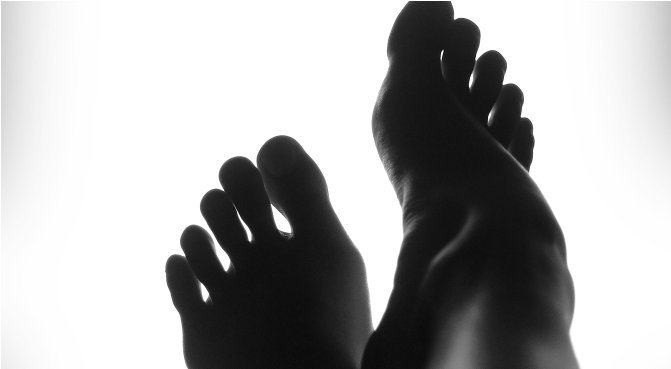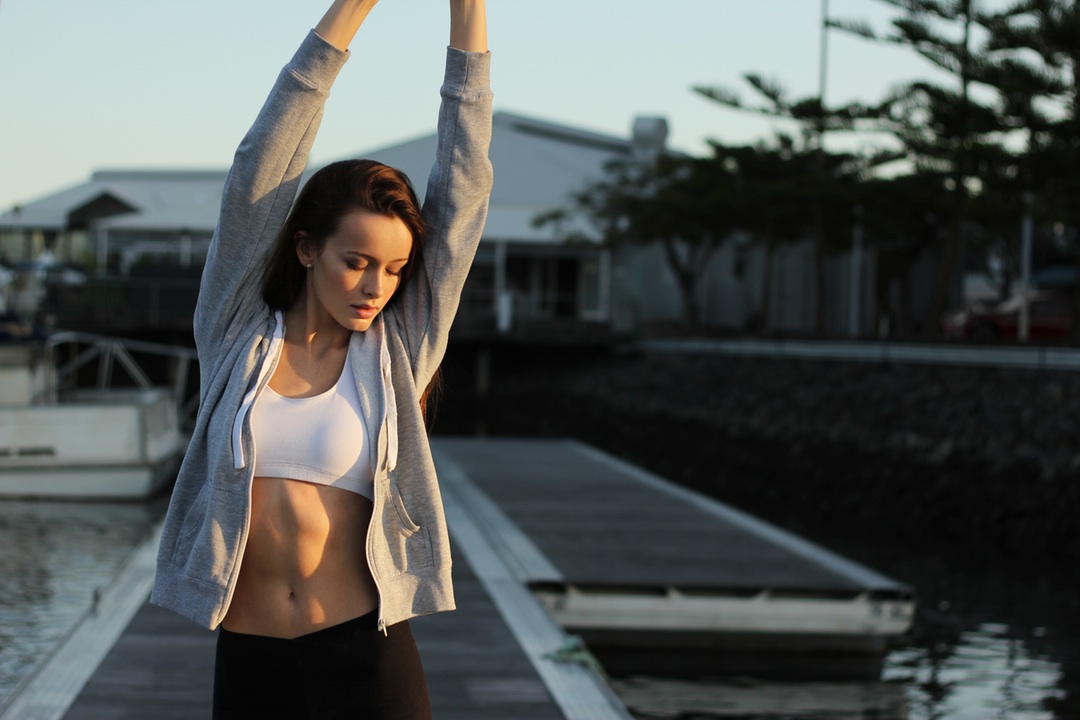Where there is science, there is myth
With everything, whether its personal training, nuclear fusion or even running style there is always conflicting information out there. Or rather, differences of opinion between professionals in all fields, regardless of title or education. Sport therapy is no different.
So I wanted to take a look at some of the myths, consider why the misconception might be there and then review available research to see if we can come with a better understanding. The areas we’ll take a look at are:
1. ICE
2. Pain killers
3. Training styles
4. No pain, no gain
5. Stretching
1. Ice
Ice, or cryotherapy to give it its posh technical name, is one part of a broader initial treatment when you first get injured known as RICE:
R – Rest
I – Ice
C – Compress (which has now been replaced by Support)
E – Elevate
So, why ice?
The reason given by some professional practitioners and textbooks is: It reduces pain and inflammation, which, in turn, reduces and improves healing time. The science behind this is that pain reduces when nerve receptors lose sensitivity, which occurs when the temperature reaches below -40 degrees Celsius. In the area of the body that gets cold, the arteries go through what’s known as vasoconstriction, or in other words they get smaller. This is meant to slow the circulation, and has therefore the additional effect of reducing inflammation.
What’s the catch?
Despite its widespread use, that are a number of experiments that have been done that have shown that Ice actually has no effect on the recovery time.
2. Pain Killers
To a certain number of people, pain killers are the first port of call before undergoing sports massage or injury treatment.
However, I don’t believe this is the correct route to go down for sports treatment. In any treatment, there needs to be correct feedback throughout the entire treatment. If painkillers are in the system, then that feedback will be altered and the initial goal of the treatment will not be achieved.
There’s another problem. The sports therapist’s aim is to reach a sufficient depth within a patient’s pain threshold in order to realign muscle tissue and assist the inflammation system. But, with incorrect feedback, this may be by-passed, resulting in too much pressure being applied. Instead of assisting, you are in danger of restarting the inflammation system. If there is bruising, then the body goes back to its original state once the bruising has healed. If the treatment continues, then the sports therapist will inadvertently achieve the title of “Brutus the destroyer,” or the treatment cannot be carried out.
3. Old School Vs New School training styles
Having been in the fitness for 8 years, I have encountered two radically different schools of thought that have entered the arena. Let’s call them “old school” and “new school” training styles.
It’s worth bearing in mind because it means that there is conflicting information in both and meeting the Fitness professionals from the Old world of training and Other fitness professionals from the New world style i feel i need to point out these purist point of views.
Examples
Let’s take some examples of the same techniques to illustrate the difference between them.
First of all, consider the lunge. According to the new school theorists, your knee should not be allowed to go in front of your toes. On the other hand, if you are of the old school persuasion, then your knee must be in front of your toes. Or, another example, the bench press. Old school proponents would insist that you lock out your arms at the top. New school, however, is exactly the opposite, advising that you leave your elbows soft and not locked out at all at the top.
The science behind the theories
So what gives? First of all, old school theorists believe that it is beneficial to reach the end range of motions which you know you can hold with strength. It means, or so the theory goes, you are less likely to become injured because your body can handle fatigue better and this especially comes in handy for competitive situations.
New school theorists, however, believe that this will wear away at ligaments and joints and will make you more, not less, susceptible to injury and your range of motion will suffer as a result in later life.
Who’s right and who’s wrong?
As with so many things in life, there is no easy right or wrong answer. The advice from this, on the other hand, I believe, is simple. It’s about the motive. Every movement or exercise combined with how you do it, why you do it and for how long you do it has to be based on your reason for doing it. In other words, your goal determines your training style. No one move is superior to another – it’s just how you do it, and why. This is the same for fixed versus free weights and body weight: all have a reason for using it but it’s up to you (or your coach or instructor) as to why.
4. No pain, no gain means back to pain
Being a sports therapist, this is always the first question that I get asked by people that are considering their first treatment. It’s often connected to a bad experience, or a friend telling them that they need to withstand pain, or a passage of right or whatever. A good sports therapist is not “Brutus the destroyer”.
The right touch approach
As I mentioned, the pressure that’s applied is dependent on the feedback that the therapist receives. The therapist’s aim is to relax conflicting muscle tissue by applying exactly the right pressure to the area to break down the haphazard formed healing tissue in the area.
If the therapist applies too much force then the muscle will incorrectly contract in an attempt to protect itself. There won’t be the intended physical release and the therapist might hear from the client,”it’s too much”. But the same can happen the other way round – if there’s not enough pressure, then there is no difference in the muscle tissue. I call this “the right touch” approach, and depending on the individual and level of discomfort, as a general rule, the treatment gets easier over time and the release tends to last longer.
5. Stretching in training
Well, now here’s a complicated subject. It reminds me of my early days, when I was experimenting with it at university. The methods, theories and developments of stretches are manifold. One of the debates is around the notion and use of static stretching versus dynamic stretching. As explained in an article on Competitor.com: Dynamic stretches involve a repetitive and challenging motion, pushing the body part further with each repeat; while static stretching is a sustained, less challenging stretch, that is held.
Do the right stretches at the right time
Some of the problems seen with static stretches before training include inhibiting the effectiveness of the muscle during training. Conversely, dynamic stretches will help warm up your body, and help prepare you physically and mentally for what awaits you. This will also help you in your injury prevention and, unlike static stretching, won’t inhibit your strength.
So next time you exercise, why not try some dynamic stretches before you exercise and some static stretches afterwards. As I mentioned in my previous blog, all too often, people skip stretching altogether. People always tend to do the minimum amount of static stretching, if any, after their training session. The only benefit for me is a selfish one: I get paid more this way.
Have fun with your training and let me know your experiences.
Further reading
Bruckner, P. & Khan, K. (2008) Clinical Sports Medicine [3rd ed], Sydney: McGraw Hill
Bird, S. Black, N. Newton, P (1998) Sports Injuries Causes, Diagnosis, Treatment and Prevention, Tottenham Court Road: Stanley Thrones
Sources for this article
- Mirkin G. Why Ice Delays Recovery. March 16, 2014.http://drmirkin.com/fitness/why-ice-delays-recovery.html. Accessed June 4, 2014. ↩
- Journal of Athletic Training 2013;48(4):528–545, doi: 10.4085/1062-6050-48.4.02 ↩
- Malone T, Engelhardt D, Kirkpatrick J, Bassett F. Nerve injury in athletes caused by cryotherapy. J Athl Train. 1992; 27(3): 235–237. ↩
- Tseng CY, Lee JP, Tsai YS, Lee SD, Kao CL, Liu TC, Lai C, Harris MB, Kuo CH. Topical cooling (icing) delays recovery from eccentric exercise-induced muscle damage. J Strength Cond Res. 2013;27(5):1354-61. doi: 10.1519/JSC.0b013e318267a22c. ↩
- Drez D, Faust DC, Evans JP. Cryotherapy and nerve palsy. American Journal of Sports Medicine. 1981; 9:256-257. ↩
- Tidball JG, Wehling-Henricks M. Macrophages promote muscle membrane repair and muscle fibre growth and regeneration during modified muscle loading in micein vivo. J Physiol. 2007; 578: 327-336. ↩
- Tidball JG. Inflammatory processes in muscle injury and repair. Am J Physiol Regul Integr Comp Physiol. 2005;288:345-353. ↩
- The use of Cryotherapy in Sports Injuries,’ Sports Medicine, Vol. 3. pp. 398-414, 1986 ↩
- Dougherty PJ, Davis MJ, Zawieja DC, Muthuchamy M Am J Physiol Regul Integr Comp Physiol. 2008 May; 294(5):R1524-32. ↩
- Andrews J R, Harrelson G L, Wilk K E. 2nd ed WB Saunders; Philadelphia, PA: 1998. Physical Rehabilitation of the Injured Athlete. ↩
- J Athl Train. 2002 Oct-Dec; 37(4): 413–429. ↩
- Tropp H, Ekstrand J, Gillquist J Med Sci Sports Exerc. 1984; 16(1):64-6. ↩


